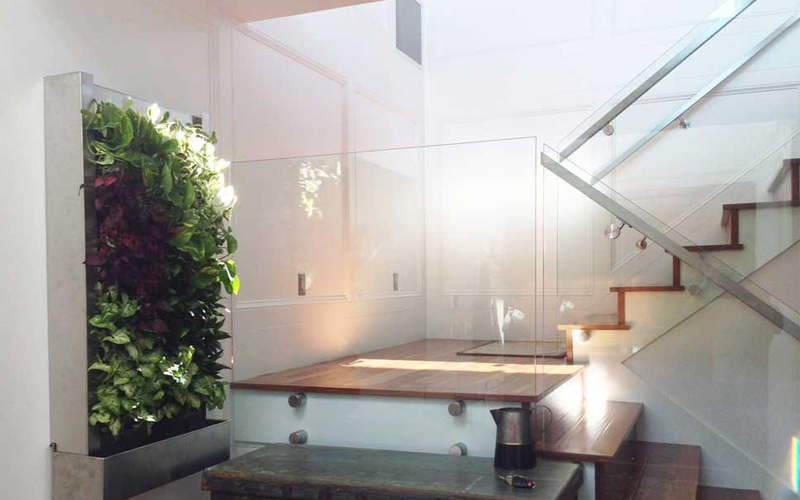Professional Practice
Applying Ecological Design: Indoor Plants
 Residential living wall design and installation / Vertical Landscape Architects
Residential living wall design and installation / Vertical Landscape Architects
People in industrialized countries can spend up , increasing their exposure to indoor air pollution. Indoor plants can dramatically improve human productivity and health, and effectively a number of volatile organic compounds (VOCs) that come from adhesives, furnishings, clothing, and solvents. Indoor plant systems range from common house plants to more complex indoor-outdoor vertical walls.
Humans have a biophilic response to plants. Research has explored how exposure to plants, or even images of plants, indoors and outdoors can improve productivity and create a sense of well-being.
Indoor plant benefits include:
- Improved indoor air quality: With the right plants, indoor plants can reduce up to 87 percent of common household air pollutants.
- Improved health: Up to ten percent reduction of rates of asthma, headaches, and respiratory problems.
- Increased human productivity: Productivity rates can increased by 20 percent in environments with superior air quality.
- Reduced energy usage: Energy usage can be reduced by 15 percent because less air circulation is required with indoor plants.
Sources: and , The Dirt, American Society of Landscape Architects
Organizations
, U.S. Green Building Council
Resources
, Treehugger
, GreenBuilding.com
, Clean Air Gardening
, Terrapin Bright Green
Research
ˇ°,ˇ± Timothy Beatley, Island Press, 2016
"," B.C. Wolverton. Penguin, 1998
"," Barney Burroughs and Shirley Hansen. Fairmont Press, 2008
"," Barbara Pleasant. Storey Publishing, LLC, 2005
ˇ°,ˇ± Igor Josifovic, Judith de Graaff, Callwey Verlag, 2016
Government Resources
, U.S. Environmental Protection Agency
, U.S. Environmental Protection Agency
Projects
Vertical Landscape Architects